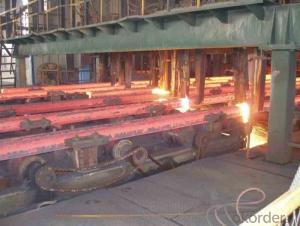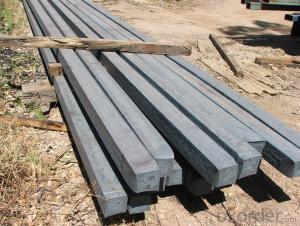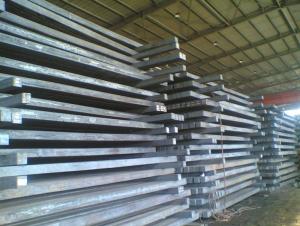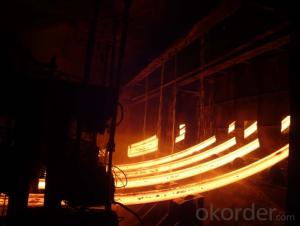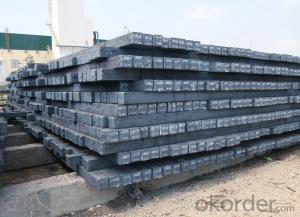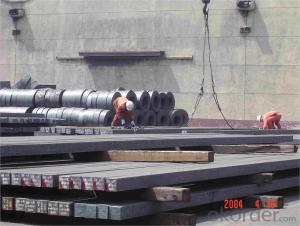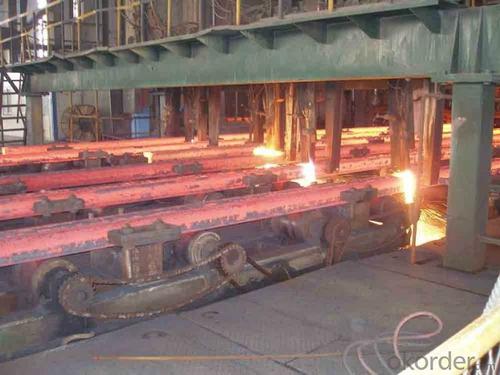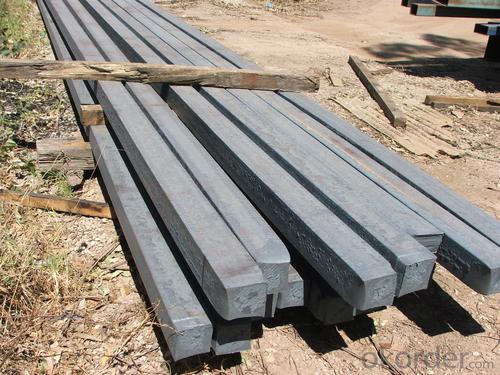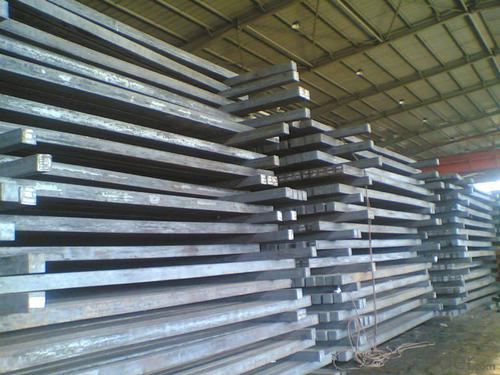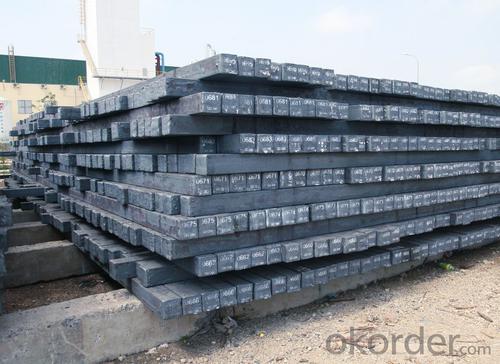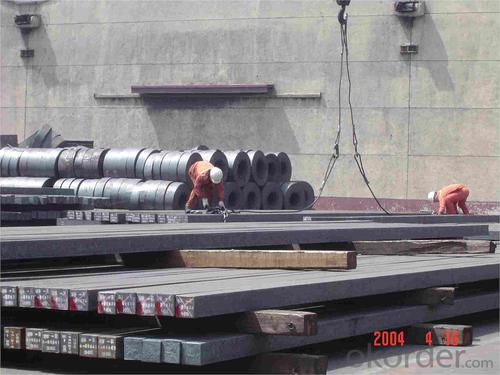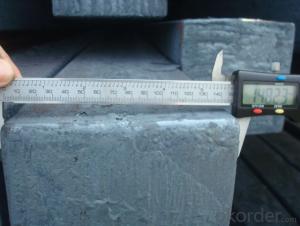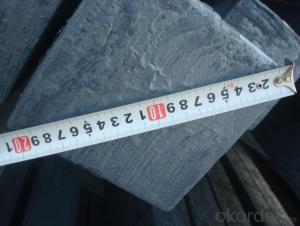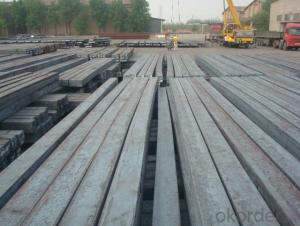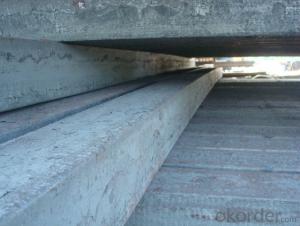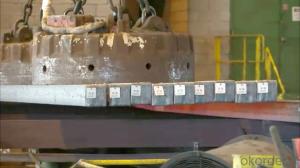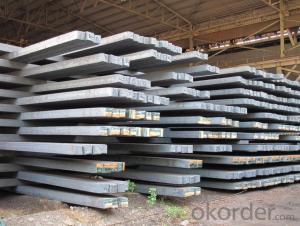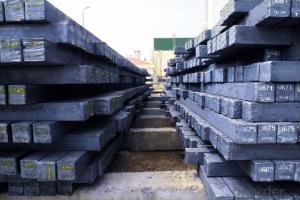Q235/3SP 165MM Blast Furnace Hot Rolled Steel Billet
- Loading Port:
- Tianjin
- Payment Terms:
- TT OR LC
- Min Order Qty:
- 2000 m.t.
- Supply Capability:
- 30000 m.t./month
OKorder Service Pledge
OKorder Financial Service
You Might Also Like
Description of Q235/3SP 165MM Blast Furnace Hot Rolled Steel Billet
Our hot dip galvanised steels consist of a steel substrate with a metallic zinc coating applied by means of a continuous hot dip galvanising process. Metallic zinc coatings are available in steel grades ranging from steel for bending and deep drawing applications, to structural steels and high yield strength steels.
A glossy surface finish obtained under specific skin-pass conditions (either non-skin-passed or skin- passed with smooth cylinders to obtain low roughness) can be provided if required at time of enquiry.
Advantage of Q235/3SP 165MM Blast Furnace Hot Rolled Steel Billet
Uncoated CR steel sheet With the features of in line with the international highest standards in demension and shape, excellent surface finish and properties, the products are mainly used in home appliance and automobile industries.
Galvanized steel sheet(include HDG and EG)
With the features of good corrosion resistance, the products are mainly used in automobile, home appliance, electronics, building and machinery manufacture industries, etc.
Precoated steel sheet With the features of enviromental protection and good processablility, long lasting surface durability, rich in colors, the products are maily used in building, home appliance and furniture industries, etc.
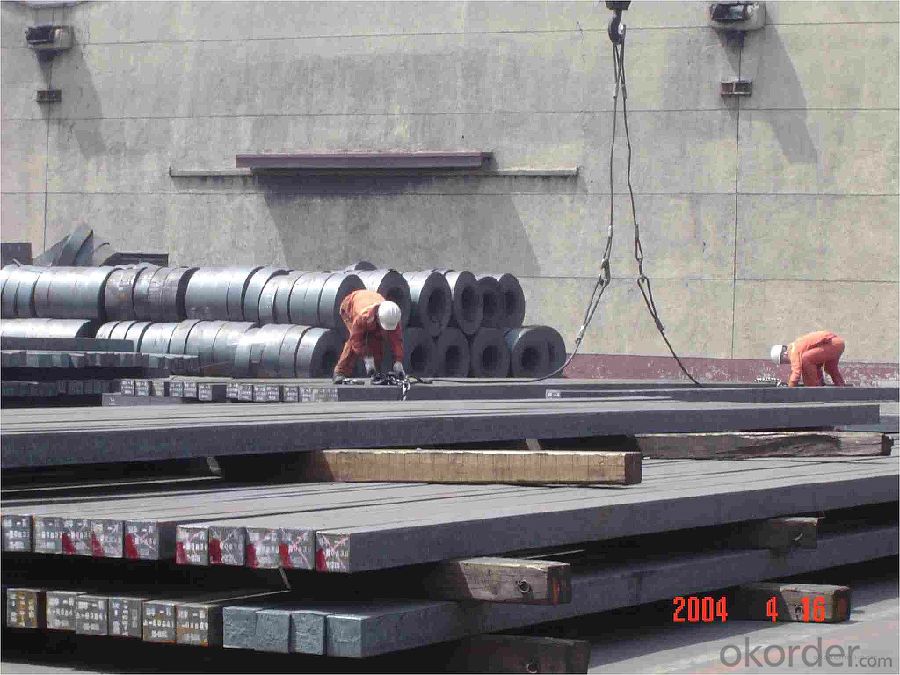
Applications of Q235/3SP 165MM Blast Furnace Hot Rolled Steel Billet
Our hot dip galvanised steels can be used in a very wide range of applications for industrial markets, both indoors and outdoors. Some of the most common applications are:
Building: wide sections for roofing and cladding, doors, door frames, metallic ceilings, partitions, structural members etc
Domestic appliances: all appliances for this sector (both white and brown goods) are manufactured with hot dip galvanised steels
Miscellaneous: electrical cabinets, aeraulic components, air conditioners, road signs etc
Zinc hot dip galvanised steel is suitable for contact with foodstuffs under certain conditions, as specified in European directive 89/109/EEC and French standard NF A 36-712-1. Please contact us for further information on this subject.
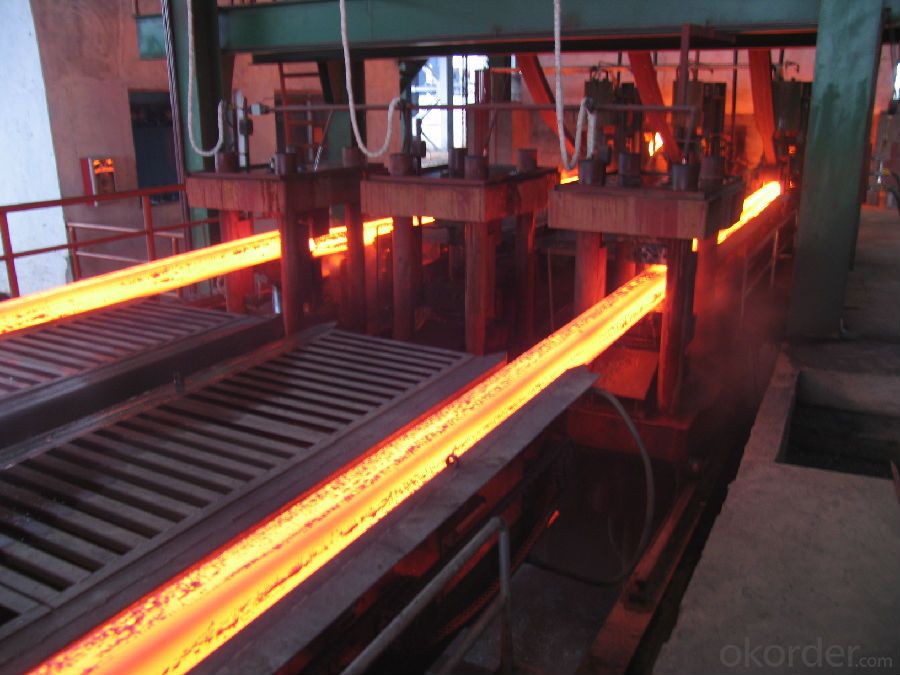
Specifications of Q235/3SP 165MM Blast Furnace Hot Rolled Steel Billet
Quality | Q/BQB 440-2003 | JIS G3312-1994 JIS G3321 | EN 10326-2004 | ASTM A653-02a |
EN 10327-2004 | (BASE PLATE) | |||
(BASE PLATE) | ||||
Commercial Steel | DC51D | SGCC SGLCC | DX51D+Z DX51D+AZ | CS Type A/B/C |
Forming Steel | St01,St02,St03 | SGCD1 SGLCD1 | FS Type A, Type B | |
Drawing | DC52D /DC53D | - | DX52D+Z DX52D+AZ | DDS TYPE A/C |
Steel | DX53D+Z DX53D+AZ | |||
Structural | S280GD (StE28) | SGC400 SGLC400 | S280D+Z DX54D+AZ | SS275 |
Steel | S350GD (StE34) | SGC440 SGLC440 | S350D+Z S350D+AZ | SS340 Class1 |
FAQ of Q235/3SP 165MM Blast Furnace Hot Rolled Steel Billet
We have organized several common questions for our clients,may help you sincerely:
1. How Can I Visit There?
Our company is located in Tianjin City, China, near Beijing. You can fly to Tianjin Airport Directly. All our clients, from home or aboard, are warmly welcome to visit us!
2. How Can I Get Some Sample?
We are honored to offer you sample.
3. Why choose CNBM?
Our delivery time about 15-20days for standard sizes, if you have other requirements like hardness, quanity and width ,it is about 20-40days. But don't worry we also try our best for the delivery time ,because time longer and our cost is higher.
- Q: How are steel billets used in the manufacturing of automotive engine components?
- Steel billets are used in the manufacturing of automotive engine components as they serve as the raw material from which various engine parts are forged or machined. These billets are heated and shaped into different forms such as crankshafts, connecting rods, camshafts, and valves, which are integral to the functioning of an engine. By using steel billets, manufacturers can ensure the strength, durability, and reliability of these components, resulting in high-performance engines.
- Q: How are steel billets rolled into shape?
- Steel billets are rolled into shape through a process called hot rolling. This process involves heating the steel billet to high temperatures, typically above 1,000 degrees Celsius, to make it malleable and easier to shape. The heated billet is then passed through a series of rolling mills, which consist of a pair of cylindrical rollers that rotate in opposite directions. As the billet passes through the rollers, it is gradually compressed and elongated, resulting in a desired shape and size. The rollers apply high pressure on the billet, effectively reducing its thickness and increasing its length. This continuous rolling process allows for precise control over the shape and dimensions of the steel product. To ensure smooth rolling and prevent the billet from sticking to the rollers, lubricants are often applied. These lubricants also help in dissipating the heat generated during the rolling process. Depending on the desired final product, the steel billet may undergo multiple passes through the rolling mills to achieve the desired shape and dimensions. After the initial rough rolling, the steel may be further shaped and refined through additional rolling stages. Once the desired shape is achieved, the steel is then allowed to cool and solidify. This cooling process is crucial to ensure the final product has the desired mechanical properties and structural integrity. Overall, the hot rolling process of steel billets is a crucial step in the production of various steel products. It allows for the efficient shaping and forming of the billets into different shapes, sizes, and profiles, meeting the specific requirements of different industries such as construction, automotive, and manufacturing.
- Q: What are the main factors affecting the machinability of stainless steel billets?
- The machinability of stainless steel billets is influenced by several key factors. 1. Alloy composition: The composition of stainless steel, including the presence of various alloying elements, significantly affects its machinability. Certain elements such as sulfur, lead, and selenium can improve machinability by enhancing chip formation and reducing tool wear. On the other hand, elements like chromium and nickel, which are commonly found in stainless steel, can increase hardness and reduce machinability. 2. Hardness: The hardness of stainless steel billets plays a crucial role in determining machinability. Higher hardness levels make the material more difficult to cut, which can result in increased tool wear and reduced efficiency. Hardness can be influenced by various factors, including alloy composition, heat treatment, and mechanical processing. 3. Heat treatment: The heat treatment process employed on stainless steel billets can greatly impact their machinability. Heat treatment can alter the microstructure of the material, affecting its hardness, toughness, and ability to be machined. For example, annealing can soften the stainless steel, making it more machinable, while processes like hardening or tempering can increase hardness and reduce machinability. 4. Cutting tool selection: The choice of cutting tools used for machining stainless steel billets is crucial in achieving optimal machinability. Stainless steel is known for its tendency to work-harden, which can lead to increased cutting forces and tool wear. High-speed steel (HSS) and carbide tools are commonly used for machining stainless steel due to their superior hardness and wear resistance. 5. Cutting parameters: The selection of appropriate cutting parameters, such as cutting speed, feed rate, and depth of cut, is essential for achieving good machinability in stainless steel billets. The cutting parameters must be carefully chosen to balance the desired metal removal rate with minimizing tool wear and heat generation. Adjusting these parameters can help optimize chip formation, tool life, and surface finish. 6. Lubrication and cooling: The use of proper lubrication and cooling techniques during machining can significantly influence the machinability of stainless steel billets. Lubricants help reduce friction and heat generation, improving chip formation and extending tool life. Cooling methods, such as flood or through-tool cooling, can dissipate heat and prevent thermal damage to the workpiece and cutting tool. All these factors interact with each other to determine the machinability of stainless steel billets. A thorough understanding of these factors allows manufacturers to optimize the machining process and achieve efficient and cost-effective production of stainless steel components.
- Q: Can steel billets be used in the production of railway infrastructure?
- Yes, steel billets can be used in the production of railway infrastructure. Steel billets are semi-finished products that are typically used as raw material in the manufacturing of various steel products. In the case of railway infrastructure, steel billets can be further processed and shaped into different components such as rails, sleepers, and fasteners. Rails, the tracks on which trains run, are usually made from steel billets. These billets are heated and passed through a rolling mill to form the desired rail profile. The resulting rail is then further processed to meet specific requirements such as strength, durability, and resistance to wear and fatigue. Similarly, steel billets can also be used in the production of sleepers, which are the supporting structures that hold the rails in place. Sleepers are typically made from prestressed concrete or steel, and steel billets can be used as the raw material for manufacturing steel sleepers. Additionally, steel billets can be used in the production of various fasteners that are essential for railway infrastructure. These include rail clips, bolts, nuts, and washers, which are used to securely fasten rails to sleepers and other components. Overall, steel billets play a crucial role in the production of railway infrastructure. They provide the necessary raw material for manufacturing rails, sleepers, and fasteners, thereby contributing to the construction and maintenance of railway tracks, bridges, and other essential infrastructure elements.
- Q: How are steel billets used in the manufacturing of mining components?
- Steel billets are used in the manufacturing of mining components as raw material that is shaped and machined to create various parts and equipment needed in the mining industry. These billets are typically heated, rolled, and then forged or machined to form components such as gears, shafts, and structural parts that are essential for mining machinery and equipment to function efficiently and withstand the harsh conditions of mining operations.
- Q: Are steel billets used in the production of furniture?
- Typically, furniture production does not involve the use of steel billets. Steel billets are actually semi-finished products derived from molten iron and are later transformed into various shapes like bars, rods, or sheets through a process known as hot rolling. While furniture may incorporate steel, it is usually in the form of finished products such as steel tubing, steel sheets, or steel frames. These finished steel products are more commonly employed in constructing furniture, especially in industrial or modern designs. Incorporating steel in furniture manufacturing offers durability, strength, and a sleek appearance. Nonetheless, the steel used in furniture production is usually obtained through different methods compared to the production of steel billets.
- Q: How are steel billets used in the production of power transmission equipment?
- Steel billets are used in the production of power transmission equipment as they are heated and shaped into various components such as gears, shafts, and couplings. These billets provide the necessary strength and durability required for these equipment to handle high power loads and transmit energy efficiently.
- Q: How do steel billets contribute to the manufacturing of electrical appliances?
- Steel billets are used in the manufacturing of electrical appliances as they serve as a raw material for various components. These billets are transformed into sheets, wires, or rods which are then used to create the outer casings, frames, or conductive elements of the appliances. The strength and durability of steel make it an ideal choice for ensuring the longevity and safety of electrical appliances.
- Q: What is a steel billet?
- A steel billet is a semi-finished product in the form of a rectangular or square shape made from molten steel that has been solidified and cooled. It serves as a raw material for various steel products and is further processed through rolling or forging to be transformed into bars, rods, or other desired shapes.
- Q: What are the different types of heat treatment processes used for steel billets?
- There are several different types of heat treatment processes used for steel billets. Some commonly used methods include annealing, normalizing, quenching and tempering, and case hardening. Each process has its own purpose and is used to achieve specific properties in the steel billets.
Send your message to us
Q235/3SP 165MM Blast Furnace Hot Rolled Steel Billet
- Loading Port:
- Tianjin
- Payment Terms:
- TT OR LC
- Min Order Qty:
- 2000 m.t.
- Supply Capability:
- 30000 m.t./month
OKorder Service Pledge
OKorder Financial Service
Similar products
Hot products
Hot Searches
Related keywords
